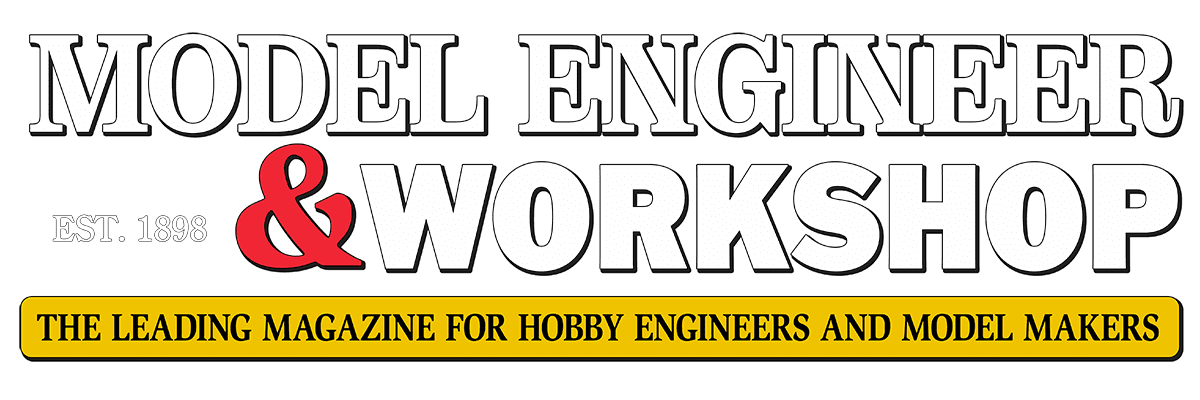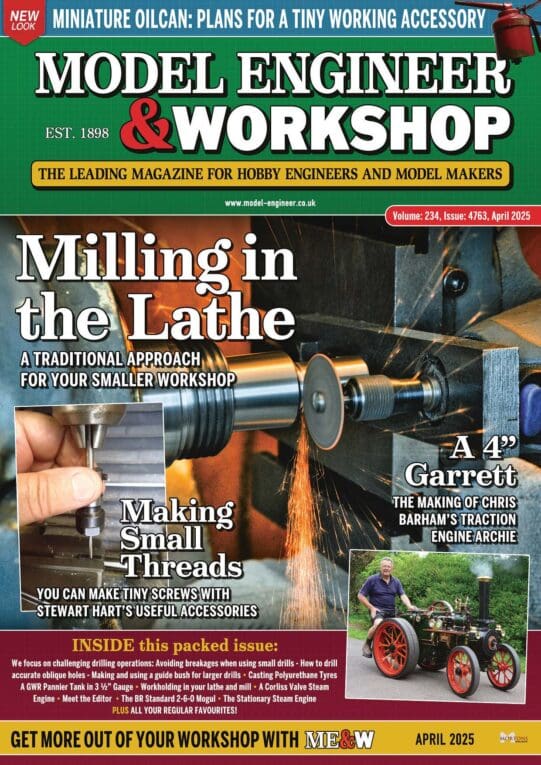I hadn’t known Wohlhaupter also made a UPA1 sized B&F head Julie, thanks.
Understanding and learning to compensate for those inevitable tool and machine deflections is an important lesson Bill. I didn’t invent the explanation. But at the micro or nano level, everything really could be compared to being made of slightly more rigid levels of rubber. Even diamonds.
For my Criterion braised tip bars, they came with a surface ground Weldon flat to position the cutting tip at the correct orientation in the head once the set screw is tightened. For bars without that? I’d start by stoning off any burrs that are already present, then machine the set screws ends to a smooth and flat face, or put a reduced size step on it below the threads minor diameter. After that, use a very short piece of clearance sized brass rod between the boring bar shank and the end of the set screw to prevent further burrs. And if your gib isn’t flat, and it likely wasn’t even when brand new, your going to have a very tough time making any fine slide movements. Machine a new one that’s as thick as possible that still allows a few thou of adjustment, then hand lap it to a very good surface finish while still keeping it dead flat and parallel.
When I bought my first lower priced boring head, one bored trial hole was enough to take it apart for de-burring the internals and shimming that collar slot that helps move the slide. I then slowly spun the feed screw in my lathe while using some 1,000 grit sand paper to smooth and de-burr the whole thread. You don’t need or want to polish it, just smooth and de-burr it a bit. Flush the feed nut clean with some de-greaser because it almost for sure has grinding dust in it, then lightly relube with some proper way oil if you have it. Way oil helps to prevent what’s known as stick / slip which is pretty important on any machine tool slide. All of that made improvements with mine. Things may be better today, but the braised tip carbide boring bar set that came with mine were all sharpened poorly and completely wrong. And for any holes close to the bar diameter, they mostly rubbed on the side of the tool instead of cutting with the tip. Luckily I understood enough to figure out the issues over a bit of time, so I think I can relate pretty well to where you are right now.
You can also make your own mild steel boring bars to fit whatever bar shank size your head uses. As well as for use on your lathe. And then use economical round HSS or solid carbide tips. Good drawings are in this book, https://www.teepublishing.co.uk/books/in-your-workshop/model-engineers-workshop-manual/ And there’s no question Stefan is using the exact same book and drawings in this video about how to make them. https://www.youtube.com/watch?v=O9d_I0A4kzg And that same book has some logical thoughts about the importance of pinning set screw adjusted gibs in place that also might help. Any pointed or cup tips on the ends of the set screws, or those ball detents pressed into the gib surface change the gib adjustment the instant the slide starts to move because they act just like very tiny wedges in those dimples they created, or that are sometimes machined in the gib. That wedging action self tightens the gib and drastically changes how smooth any slide will operate no matter how carefully it’s adjusted. For logical reasons, a set screw type gib should only be allowed to be adjusted towards or away from the dovetail slide, and never move laterally or end to end on the slide at all. The more desirable taper gibs will always have a screw at each end to both lock the adjustment and also prevent any linear movement that would loosen or tighten the gib as the slide moves in either direction.
Depending on how clever you are and what taper shank / boring head you have, a clamped on collar and single screw through it and into the top of the boring head might work while running it in reverse? Because of the upper shape on my own boring heads, a simple stepped clamping ring could also work, it just depends on what you have. But in my opinion, running the head in reverse has a bit too much uncertainty, its safer and easier if you can make or buy the correct handed boring bars.
Selecting a slightly oversized left hand lathe boring bar or turning tool if you can’t find one with the correct shank size and turning it to fit your head could work just as well? You might need to buy more than one left hand tool though. Boring bar length verses how much the project really needs has a way of inviting chatter if there too long at all. In general ball park numbers, tool rigidity starts really dropping off once the extension outside of where it’s being held goes above 3 times the tool diameter for steel, and approximately 5-7 times the diameter for solid carbide. Young’s Modulus would be the search term to use if your interested. Lighter cuts can sometimes allow you to cheat those numbers a bit. Dropping the rpm and a faster feed rate can also help with that chatter (sometimes)
Making do with what you already have available has to be done by all of us sometimes. If what your project involves justifies it, I think I’d chose to just buy the correct left hand tool. And if your own boring head has that horizontal cross hole? That same left hand tool can be used in it to bore far larger holes than the bottom two tool positions allow. I bought a left hand tool for mine to do just that because that’s exactly what that cross hole is for.
In reality, most of the difference between the expensive telescoping gauges and the cheaper one’s is being dead straight for the telescoping tubing, a very close fit between those two tubes & there surface finish. Ensuring they slide together without a hint of binding anywhere, stoning and smoothing the sidewalls and bottom of the slot in the telescoping end, a good smooth surface on the locking tip, and stoning all burrs off to improve both the locking and smoothness of operation isn’t optional with the less expensive ones. I’d also spray degrease everything when I was done with that stoning. And polish the end tips of each gauge if it’s needed, some of the cheaper sets I’ve seen were very poorly finished. I think it’s well worth taking however many hrs it involves to do so. You can’t machine what you can’t measure to. It also needs to be understood how there positioned in the hole and then gently rocked out with the telescoping part partially locked to allow the telescoping end to move to what the hole size is. If your unsure of exactly how it’s done correctly, there’s many Youtube videos about it.
For some measuring tools, they really only need a hint of lubricating oil. Less than a single drop for much of it. For my Starrett hole guages, I don’t use any oil, just a bit of dry powdered graphite that seems to work better than any oil I’ve tried. And I think the graphite makes gauges like this slightly more sensitive since any liquid lubrication product requires it’s oil layer to be sheared as the parts move, graphite doesn’t.
That proper technique with these telescoping hole gauges is also not something that can be instantly mastered by anyone. You absolutely have to practice a lot to develop the correct technique and feel on something that already has a high precision and known hole size just to double check what both yourself and the tool can work to for repeatable accuracy every time. A few different sized ball or roller bearing bores might be useful for that practice? Even then, there can still a bit of uncertainty with the gauges position always being at the exact hole C/L. I never make less than 3 measurements on any hole I’m boring just to double check I am getting that repeatable size. And even then, I’ll sometimes I’ll get measurements that don’t always agree. So I think it takes that developed feel that can’t be taught or even described very well. And that’s something anyone has to learn on there own and then verify they’ve actually learned to do so with that practice.
Hole measurement or any measurement under .001″ or within low 10ths most definitely isn’t as easy as some might assume. And I can verify that after checking what both myself and my own metrology equipment can do against good gauge blocks. Your measuring equipment might be able to measure to a few 10ths, but which 10th is it for sure, and can the user and the techniques your using, or even the environment it’s being done in allow that as well? Steel expands or contracts by roughly 6 millionths of an inch per degree of temperature difference, per inch of size. Obviously most M.E. projects don’t require nearly that level of accuracy, but what happens if/when something comes up such as just press fitting a precision ball or roller bearing into the correctly sized hole? Fitting a lathes back plate to the spindle would be another. It’s much easier if you know with some degree of certainty that you and what your using can actually do so before you even start.
Pete.




